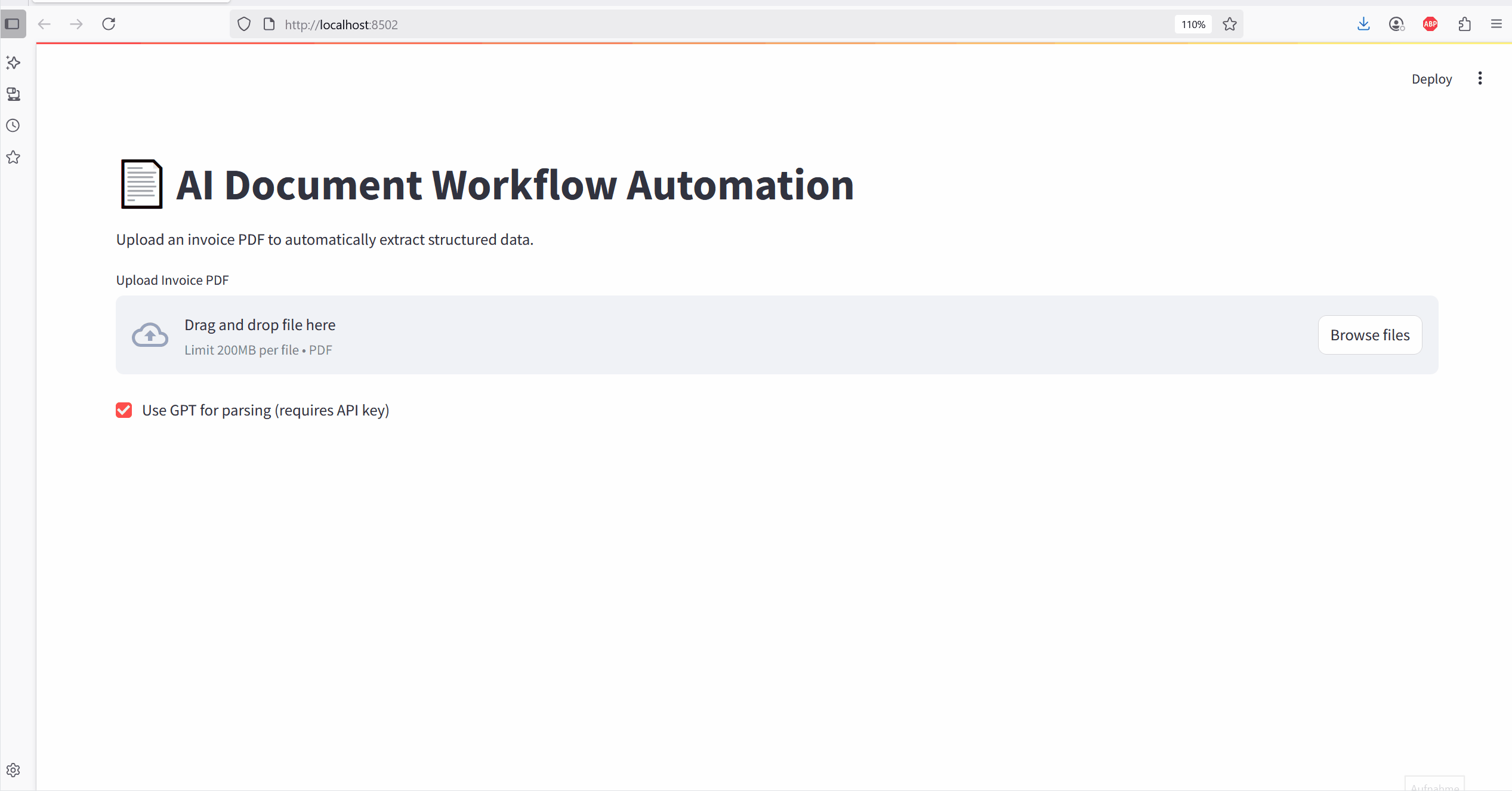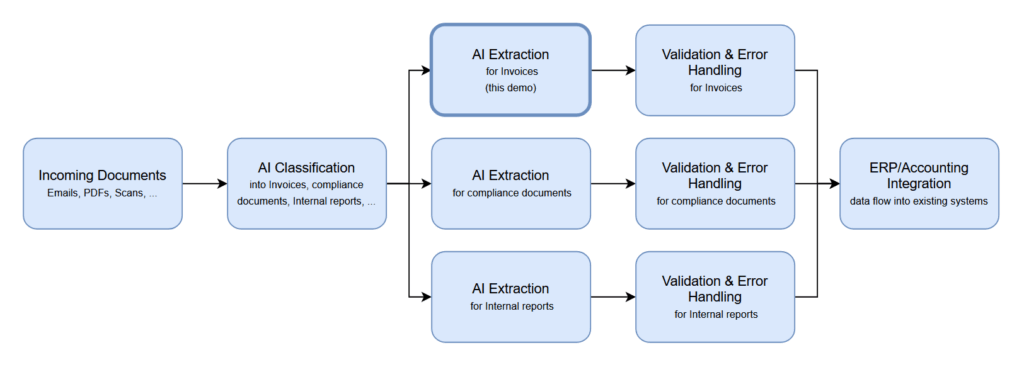Many mid-sized companies handle a large volume of documents manually — from invoices and delivery notes to contracts and reports. In this project, we worked with a client to explore how AI could simplify their workflow. Through a focused proof of concept, we evaluated the potential of AI-powered document extraction and validation to save time, reduce manual effort, and improve data accuracy — all before committing to full-scale implementation.

The company handled hundreds of invoices and other business documents every month — delivery notes, contracts, and internal forms. Their manual workflow caused predictable challenges:
– Employees spent hours entering and checking data.
– Small mistakes led to accounting delays and rework.
– Processing times slowed down approvals and cash flow.
– Scaling operations meant adding headcount, not improving efficiency.
Leadership knew automation could help but wasn’t sure how — or whether AI could realistically fit into their existing systems. They needed a structured way to explore what was possible before committing to a full solution.
To find out whether AI could realistically automate the company’s document workflow, we ran a short AI Opportunity Sprint — a structured, low-risk engagement designed to identify and validate high-value use cases.
The sprint focused on one key question: Can AI accurately extract and process data from invoices with minimal human review?
What we did:
– Process mapping: Together with the client’s finance team, we analyzed their existing document workflow to pinpoint where time and errors accumulated.
– Prototype design: We built a lightweight proof of concept using large language models (LLMs) and traditional extraction techniques to handle invoice data.
– Testing & validation: The prototype was tested on real documents to measure accuracy, time savings, and integration feasibility with the company’s accounting system.
– Business case evaluation: Results were quantified to estimate potential ROI and create a clear roadmap for scaling.
This fast, focused approach allowed the company to see concrete results within weeks — confirming that AI could automate large parts of the process and providing the confidence to move forward with implementation.

The proof of concept demonstrated that AI could deliver measurable efficiency gains in the company’s document workflow — even with a small, time-boxed experiment.
Key findings from the sprint:
– 60–80% reduction in manual data entry during testing, showing strong potential for automation.
– Significant time savings in invoice validation and approval, indicating faster turnaround and improved cash-flow management.
– Higher data accuracy and fewer accounting errors, thanks to AI-driven validation checks.
– Clear business case for scaling — the prototype provided reliable numbers on cost savings and ROI, giving the leadership team confidence to proceed with implementation.
Rather than building a full system upfront, the company now had validated evidence that automation with AI was both feasible and financially justified — allowing them to move forward with a clear strategy and minimal risk.
The sprint didn’t just confirm the value of automating invoice processing — it also revealed other areas where AI could deliver measurable gains. Once the team saw what was possible, they began identifying similar opportunities across their operations, such as:
– Delivery notes and transport documentation.
– Supplier contracts and purchase orders.
– Employee expense reports and internal approvals.
– Audit, compliance, and reporting workflows.
– Other document-heavy processes that rely on manual review.
What started as a single proof of concept became a broader roadmap for AI adoption — helping the company see where automation could scale next and how to prioritize high-ROI opportunities.
-A short, structured AI Opportunity Sprint can quickly prove whether automation with AI makes financial and operational sense — before heavy investment..
– Even a limited proof of concept can provide clear ROI evidence, helping leadership make confident, data-driven decisions about scaling AI.
– Once a single use case is validated, similar high-impact opportunities often emerge across other business processes.
– The right approach to AI adoption starts with discovery and validation, not full implementation — saving time, cost, and uncertainty.